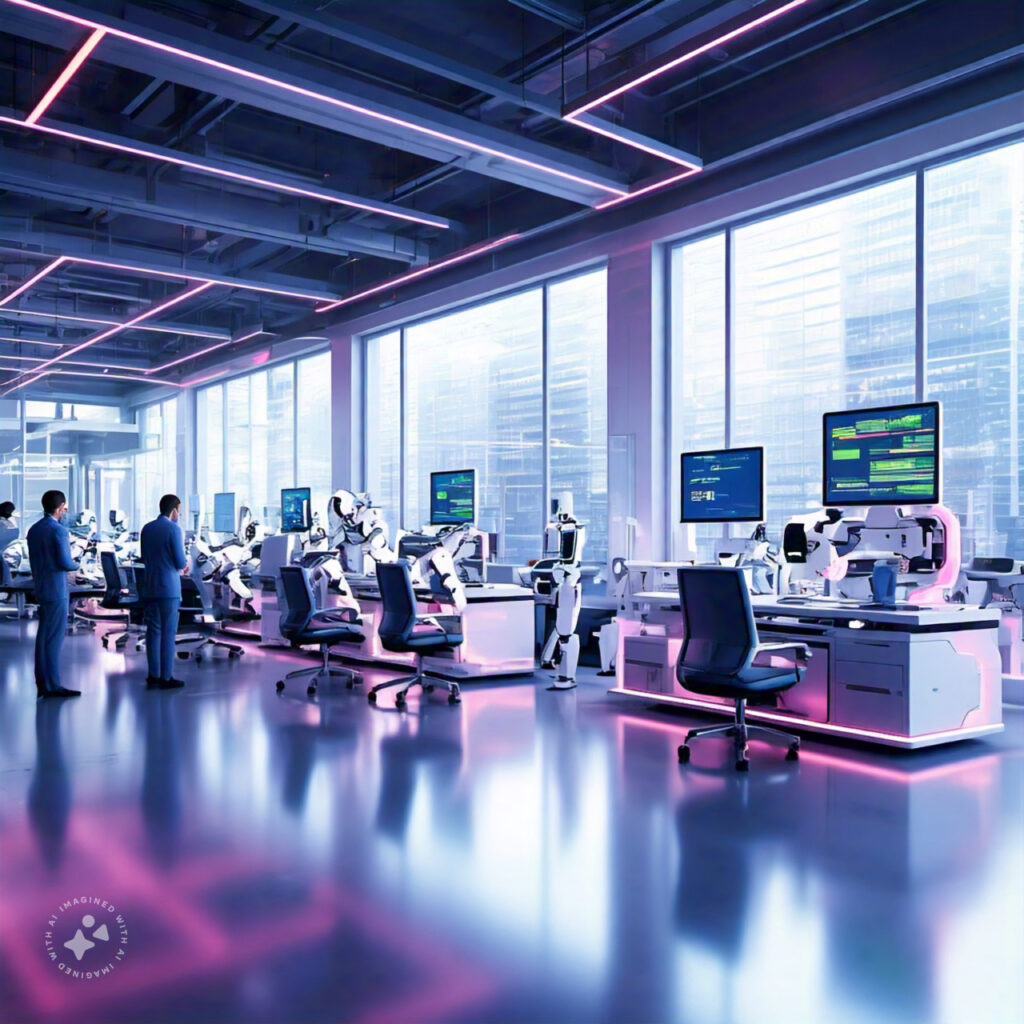
The Role of Automation in Shaping the Future of Work
Automation is rapidly changing the way we work, introducing new efficiencies, and redefining traditional roles across industries. Powered by technologies like artificial intelligence (AI), machine learning (ML), and robotics, automation is no longer a futuristic concept but a present-day reality. This article explores how automation is transforming the workplace, the opportunities it creates, and the challenges it poses.
1. Introduction to Automation in the Workplace
Automation refers to the use of technology to perform tasks with minimal human intervention. From manufacturing assembly lines to customer service chatbots, automation has become an integral part of various industries. It promises increased productivity, reduced costs, and faster execution of repetitive tasks.
2. How Automation is Transforming Industries
2.1 Manufacturing
Automation in manufacturing has been prevalent for decades, with robots performing tasks like assembling, welding, and quality inspection. Advanced robotics, combined with AI, has made production faster and more precise.
2.2 Healthcare
Automation supports healthcare professionals through AI-powered diagnostics, robotic surgeries, and patient management systems, improving accuracy and efficiency.
2.3 Retail and E-commerce
Technologies like automated inventory management, personalized shopping experiences, and delivery drones are revolutionizing retail and e-commerce industries.
2.4 Finance
Automation in finance has enabled fraud detection, algorithmic trading, and customer service chatbots, improving accuracy and reducing operational costs.
2.5 Education
Automated grading systems, personalized learning platforms, and virtual tutors are changing the educational landscape, enabling more efficient and accessible learning experiences.
3. Advantages of Automation in the Workplace
3.1 Increased Productivity
Automation performs repetitive tasks faster and more accurately than humans, boosting overall productivity.
3.2 Cost Savings
By reducing the need for manual labor and minimizing errors, businesses can save significantly on operational costs.
3.3 Enhanced Safety
Automation reduces the need for human workers in hazardous environments, lowering workplace injuries and accidents.
3.4 Consistency and Quality
Unlike humans, automated systems can perform tasks with consistent quality and precision.
3.5 Better Decision-Making
AI-driven automation analyzes data in real-time, providing insights that help organizations make informed decisions.
4. Challenges of Workplace Automation
4.1 Job Displacement
One of the most significant concerns is the potential loss of jobs as machines take over human roles, especially in industries heavily reliant on manual labor.
4.2 High Initial Costs
Implementing automated systems can be expensive, requiring businesses to invest in advanced technology and infrastructure.
4.3 Security Risks
As automation relies heavily on digital systems, it can be vulnerable to cyberattacks and data breaches.
4.4 Skill Gaps
The shift toward automation creates a demand for workers skilled in managing and programming automated systems, leaving others behind.
5. The Future of Work: A Hybrid Model
5.1 Collaboration Between Humans and Machines
The future of work is not about machines replacing humans but about collaboration. Machines can handle repetitive tasks, allowing humans to focus on creativity, problem-solving, and emotional intelligence.
5.2 Upskilling and Reskilling
To adapt to an automated world, workers must acquire new skills and competencies. Governments, organizations, and educational institutions need to support upskilling initiatives.
5.3 Emphasis on Soft Skills
Automation will increase the demand for soft skills like communication, teamwork, and leadership, as these are areas where machines fall short.
5.4 Ethical Considerations
As automation becomes more widespread, ethical concerns around job displacement, data privacy, and algorithmic biases must be addressed.
6. Real-World Examples of Automation in Action
6.1 Amazon
Amazon uses robotics in its warehouses to automate tasks like inventory management and package sorting, ensuring faster delivery times.
6.2 Tesla
Tesla’s factories employ advanced robotics to assemble cars, combining speed with precision.
6.3 Google
Google’s AI-powered systems handle tasks like email filtering, search result optimization, and digital marketing strategies.
6.4 Healthcare Providers
Hospitals use robotic surgical systems and AI-driven diagnostic tools to enhance patient care and outcomes.
7. Conclusion
Automation is reshaping the workplace in unprecedented ways. While it brings significant benefits like increased productivity and cost savings, it also presents challenges that must be addressed to ensure an equitable transition. The future of work lies in a hybrid model where humans and machines collaborate, leveraging each other’s strengths. Organizations and individuals must embrace change, adapt to new realities, and prepare for a future powered by automation.
Let me know if you’d like this article tailored further or converted into HTML format!